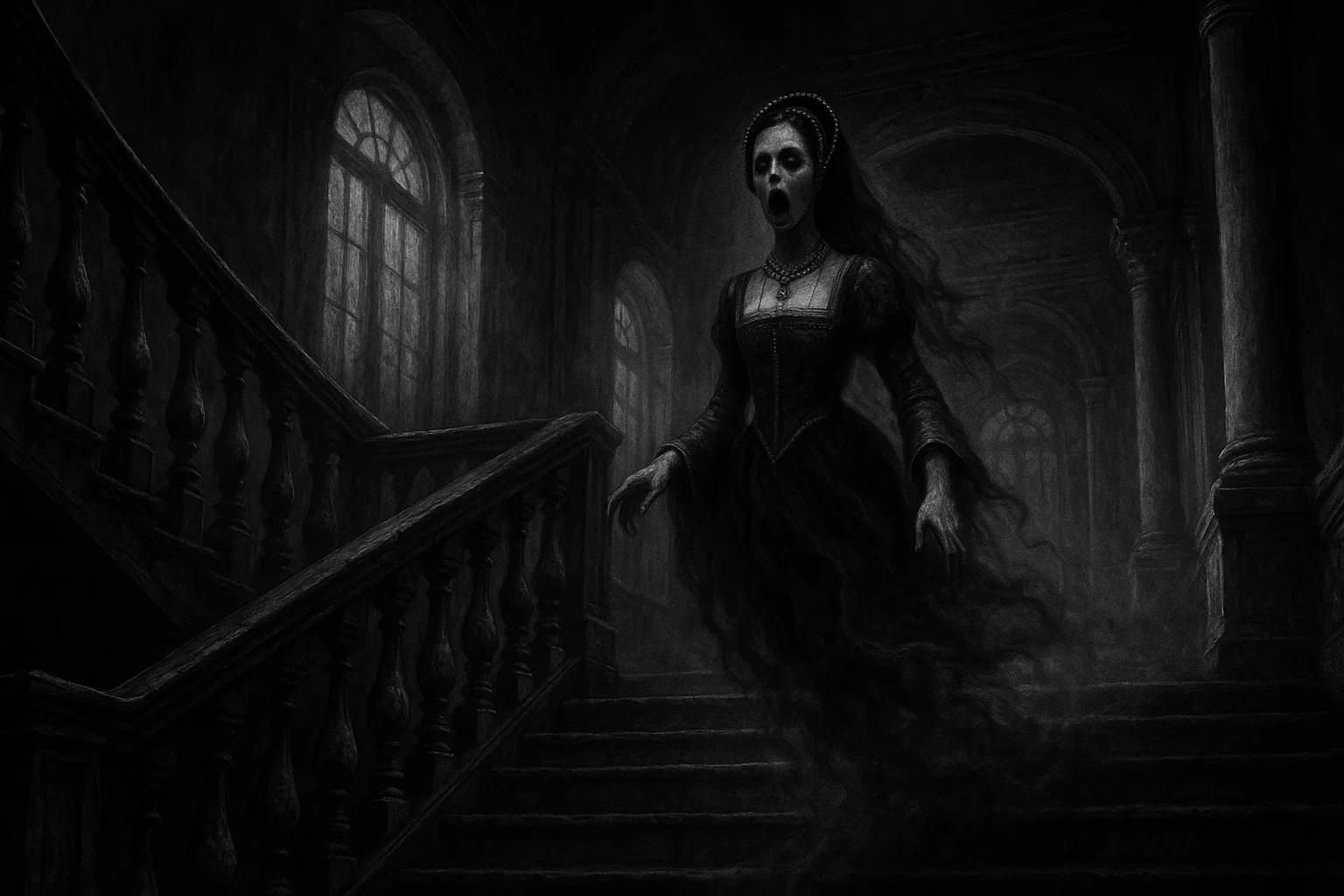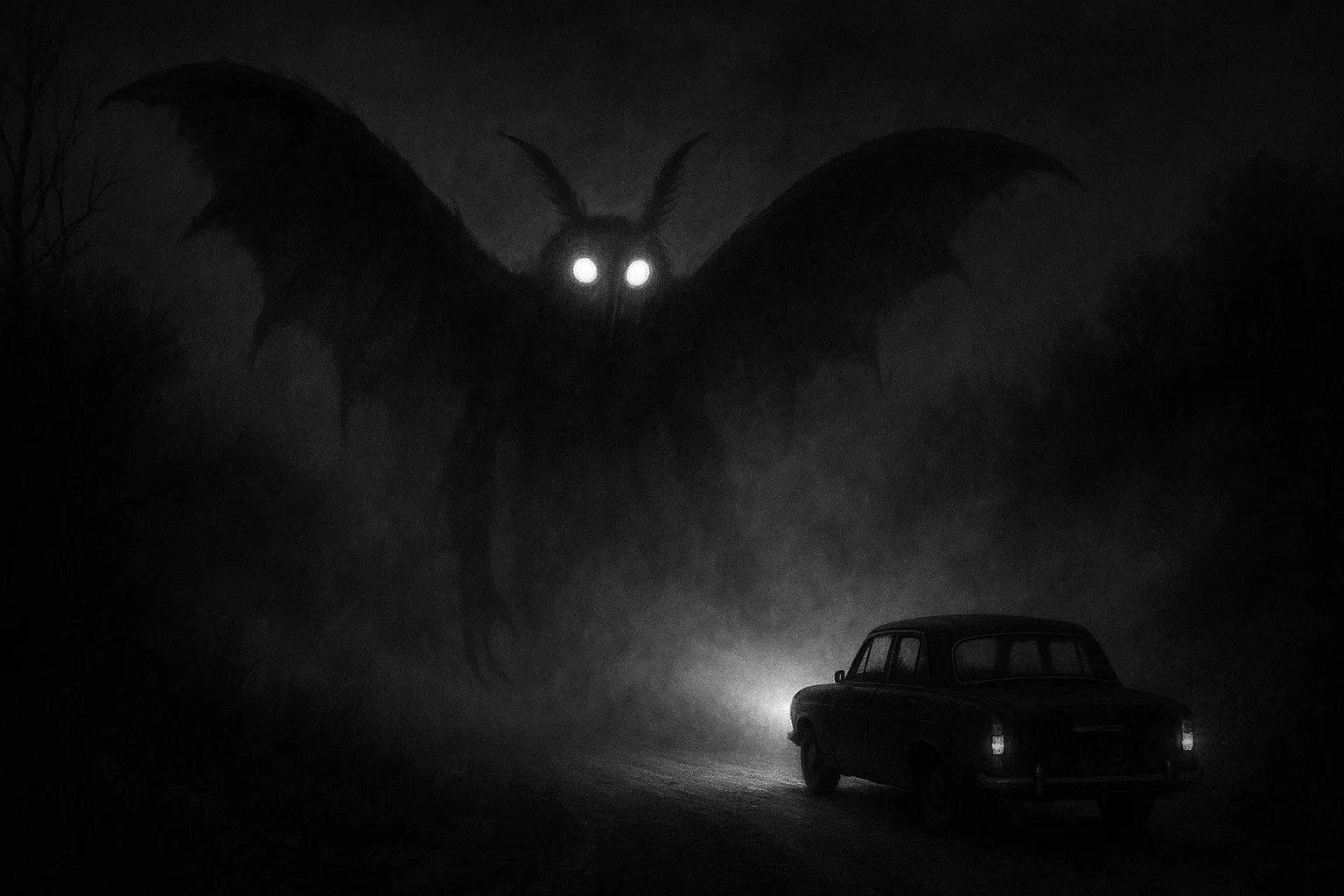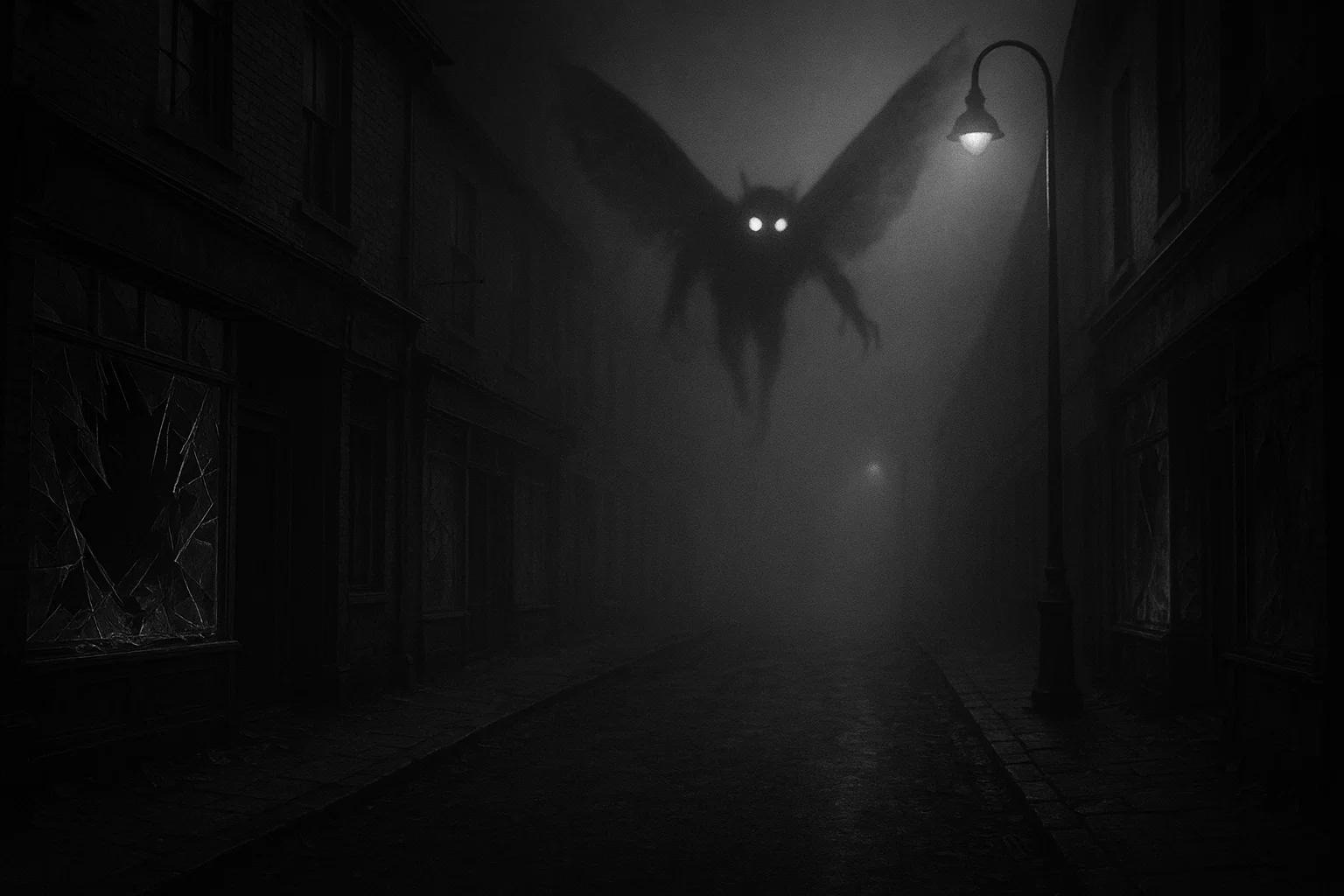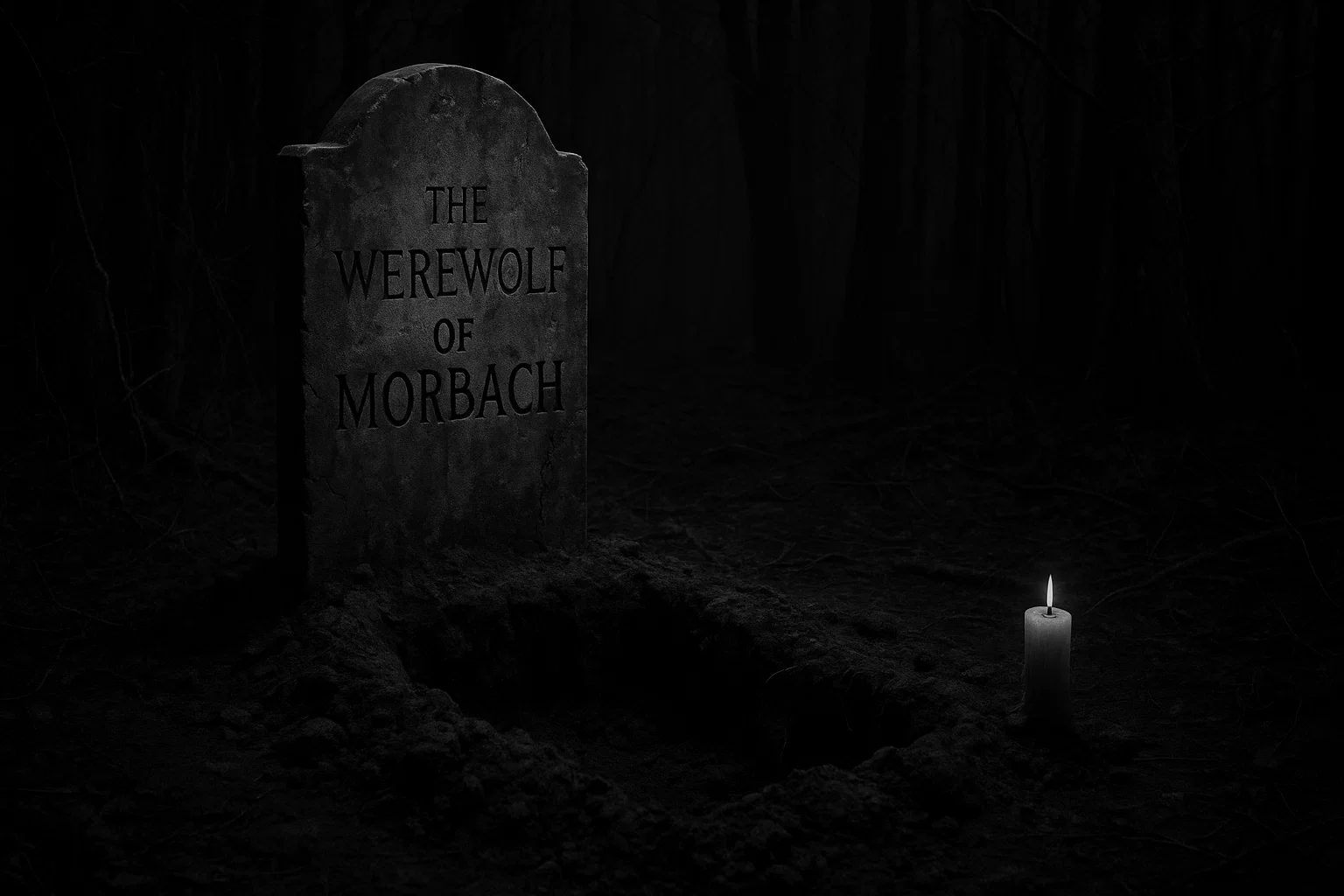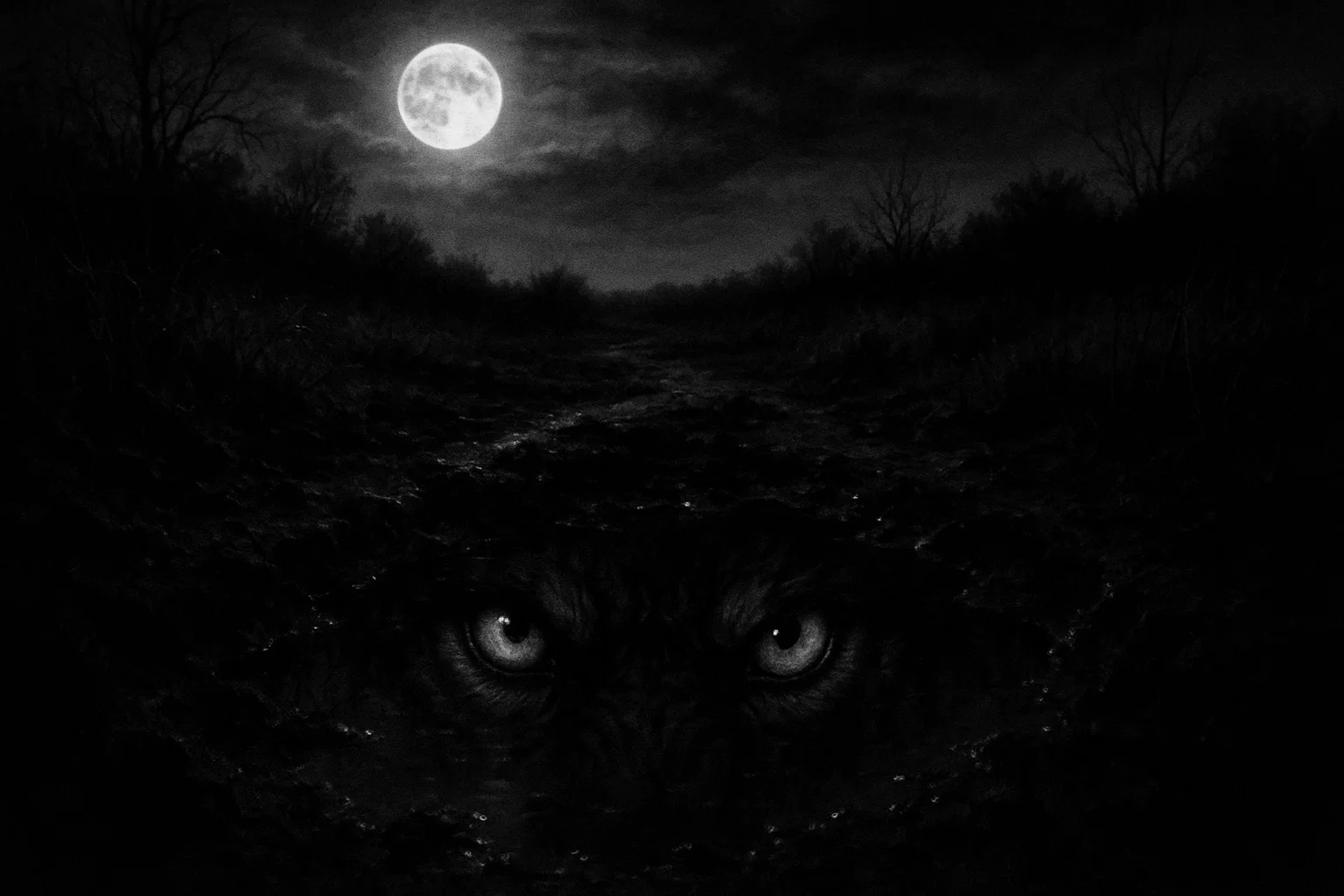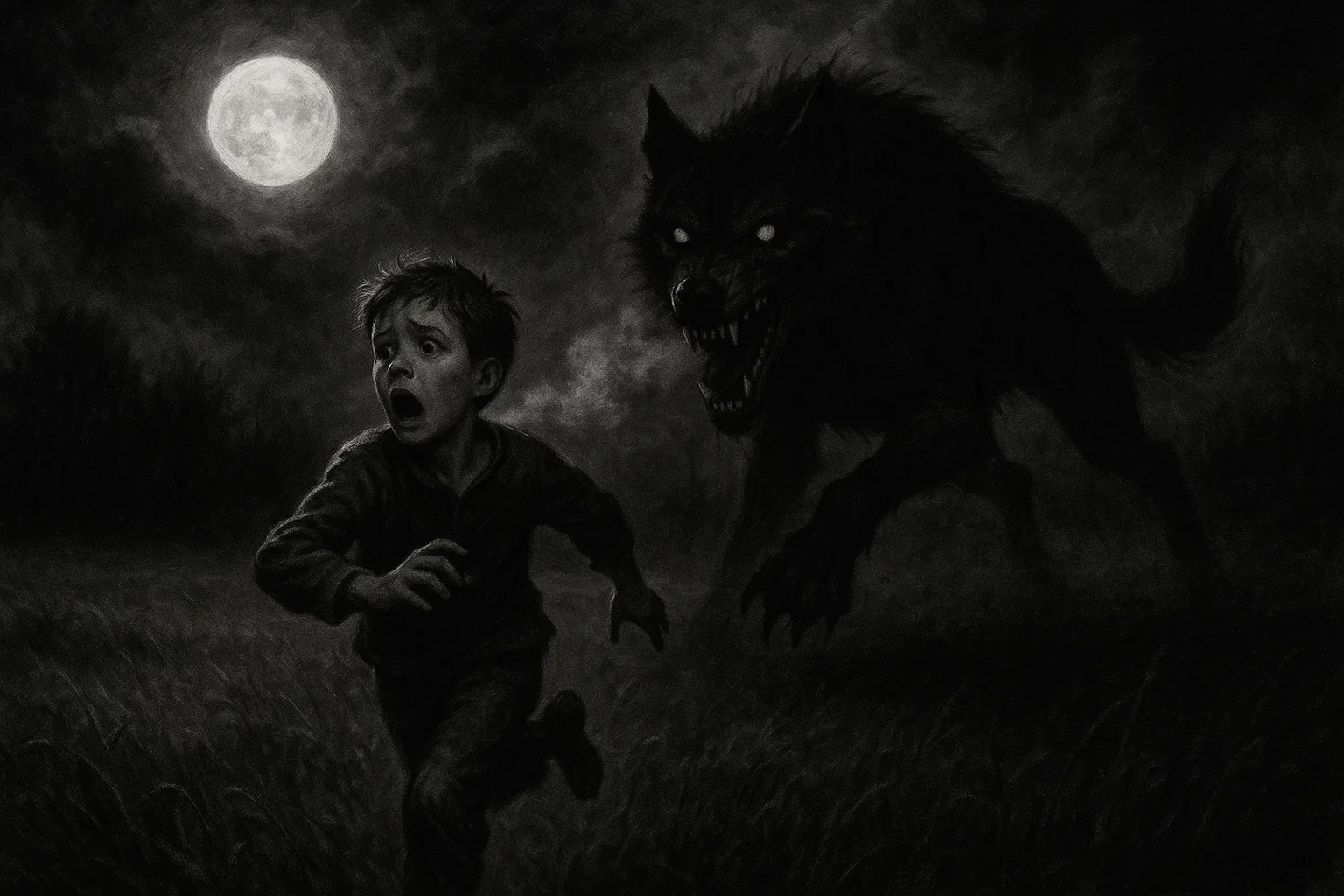Few names in history carry the weight of tragedy and intrigue like Anne Boleyn, the ambitious queen whose love for King Henry VIII reshaped England’s destiny, only to end in her brutal beheading on May 19, 1536.
Her life, a whirlwind of passion, betrayal, and political upheaval, seems to have left an eternal mark, with her ghost reportedly haunting some of Britain’s most storied sites.
From the Tower of London, where she faced the executioner’s sword, to Hever Castle, her childhood sanctuary, Anne’s spectral figure—often headless or cloaked in white silk—is said to glide through shadowy corridors, her sorrowful gaze evoking centuries of loss.
Does her spirit seek justice for her fabricated crimes, or is she forever tethered to the places that shaped her rise and fall?
This article delves into the chilling legend of Anne Boleyn’s ghost, exploring her haunted legacy across seven iconic locations, the historical truths behind her sightings, and the modern investigations that keep her story alive. Uncover the eerie tale of England’s most haunted queen, whose restless spirit continues to captivate and terrify.
Table of Contents
Anne Boleyn’s Life and Legacy
Anne Boleyn (c. 1501–1536) was born into the ambitious Boleyn family, likely at Blickling Hall, Norfolk, to Thomas Boleyn, a skilled diplomat, and Elizabeth Howard, whose noble lineage tied her to the powerful Duke of Norfolk.
Her early years were marked by privilege and education, spending time in the Netherlands and France as a lady-in-waiting to Queen Claude. There, Anne honed her wit, charm, and intellectual prowess, mastering music, dance, and religious reformist ideas, which were rare for women of her era.
Returning to England in 1521, she served Queen Catherine of Aragon at Henry VIII’s court, where her bold personality and striking presence caught the king’s eye.
Anne’s refusal to be Henry’s mistress set her apart. Demanding marriage, she sparked a seismic shift in English history. Henry’s quest to annul his marriage to Catherine led to England’s break with the Catholic Church, the formation of the Church of England, and Anne’s coronation as queen on June 1, 1533.
Her triumph, however, was short-lived. She gave birth to Elizabeth (later Elizabeth I) in September 1533 but suffered multiple miscarriages, failing to produce the male heir Henry craved.
By 1535, Henry’s affections shifted to Jane Seymour, and Anne’s enemies, led by Thomas Cromwell, orchestrated her downfall. Accused of adultery, incest, and high treason—charges historians like Alison Weir (2009) deem fabricated—she was tried on May 15, 1536, and executed four days later by a French swordsman on Tower Green.
Her dignified final speech, preserved in Letters and Papers of Henry VIII (1536), expressed loyalty to the king despite her fate.
Anne’s execution, witnessed by hundreds, was a public spectacle, and her body was hastily buried in an unmarked grave in the Chapel of St. Peter ad Vincula.
Her life, marked by ambition, reformist zeal, and betrayal, left a lasting imprint, with her ghostly legend emerging almost immediately. By the 17th century, her spectral presence was noted in court records, and her story became a cornerstone of English folklore, reflecting the era’s fascination with royal tragedy and supernatural retribution.
You May Also Like: The Minneapolis Mystery | Horror Story
Who Is Anne Boleyn’s Ghost?
Anne Boleyn’s ghost is believed to be the restless spirit of England’s doomed queen, whose unjust execution and turbulent life bind her to the mortal realm.
Known for her pale figure in a white or grey gown, often headless or carrying her severed head, she appears at sites tied to her personal history: her childhood homes (Hever Castle, Blickling Hall), royal residences (Hampton Court, Windsor Castle), execution site (Tower of London), and ancestral resting place (Salle Church).
A lesser-known site, Marwell Hall, is also linked to her hauntings. Her appearances are frequently reported on May 19, the anniversary of her beheading, suggesting a temporal connection to her trauma. Witnesses describe her as sorrowful, contemplative, or anguished, as if seeking justice for her fabricated crimes or solace among her family.
Unique to Anne’s ghost are her headless manifestations, particularly at Blickling Hall, where she arrives in a spectral carriage drawn by headless horses, a vivid symbol of her violent death.
Her white silk gown and French hood, consistent with her execution attire, distinguish her from other apparitions, tying her to historical accounts of her final moments. The 1864 Tower of London sighting, where a soldier passed through her form, and the 2020 Blickling Hall EVP recording of “My head” underscore her paranormal prominence.
Unlike other royal ghosts, Anne’s hauntings span multiple locations, reflecting her widespread influence and the public nature of her tragedy. Her legend, amplified by Victorian spiritualism and modern media like Spencer (2021), portrays her as a sentient spirit, embodying resilience and unresolved anguish, making her England’s most iconic haunted queen.
The Legend of Anne Boleyn’s Ghost
The legend of Anne Boleyn’s ghost is a mesmerizing tapestry of historical tragedy and supernatural terror, rooted in her dramatic rise and brutal fall. Emerging within decades of her 1536 execution, the legend was fueled by her public beheading, fabricated charges, and the Reformation’s upheaval.
Early accounts, preserved in 17th-century court diaries like those of Sir John Harington, describe a pale lady in white silk wandering the Tower of London, her headless form evoking her gruesome end.
By the 18th century, her ghost was a fixture in English folklore, with sightings reported across sites tied to her life, from her birthplace at Blickling Hall to her coronation festivities at Hampton Court.
The legend’s most striking feature is Anne’s headless apparition, particularly at Blickling Hall, where, on May 19, she arrives in a phantom carriage drawn by four headless horses, her severed head resting in her lap.
This chilling image, first documented in Norfolk Annals (1850), symbolizes her violent death and unjust conviction. At Hever Castle, her ghost is more contemplative, appearing under an ancient oak where she courted Henry or gazing from her bedroom window, evoking her lost youth.
In the Tower of London, she is seen kneeling in prayer at the Chapel of St. Peter ad Vincula or pacing Tower Green, retracing her final steps. Hampton Court’s Haunted Gallery hosts her sorrowful figure, accompanied by the rustle of silk, while Windsor Castle and Salle Church portray her as a peaceful spirit, seeking solace among ancestors.
The legend grew through Victorian spiritualism, with séances at the Tower and Hever Castle claiming to contact Anne’s spirit, as noted in The Spiritual Magazine (1865).
The 1864 soldier’s encounter, widely reported in The Illustrated London News, added credibility, describing her ethereal form passing through a bayonet.
The 19th century also saw her ghost linked to royal omens, with sightings preceding significant events, such as the 1936 abdication crisis. Modern retellings, including The Six Wives of Henry VIII (1970) and Spencer (2021), draw parallels with Princess Diana, emphasizing Anne’s isolation and betrayal.
Her ghost’s temporal specificity—appearing on May 19 or Christmas Eve—suggests a sentient presence, while her multi-site hauntings reflect her historical prominence. Preserved through oral tradition, archival records, and paranormal investigations, Anne’s legend remains a haunting symbol of injustice, resilience, and the eternal unrest of a queen wronged.
You May Also Like: The Eery Story of Edward Mordrake | Horror Story
Notable Sightings and Encounters
Anne Boleyn’s ghost has been sighted across centuries at seven key locations, with accounts ranging from terrifying to poignant. Below is an expanded table of all known sightings, incorporating historical and modern reports from archival sources and paranormal records:
| Year | Witness | Location | Description |
|---|---|---|---|
| 1610 | Unnamed courtier | Tower of London | Saw a lady in white near Queen’s House, vanished silently, noted in Sir John Harington’s diary. |
| 1817 | Unnamed guard | Tower of London | Observed a white figure in courtyard, disappeared when approached, reported in The Gentleman’s Magazine. |
| 1864 | Soldier and officer | Tower of London | Soldier charged at white figure with bayonet, passed through; officer saw from window, collapsed soldier. |
| 1865 | Captain of the Guard | Tower of London | Saw flickering light in Chapel of St. Peter ad Vincula; witnessed Tudor procession led by Anne, vanishing. |
| 1890 | Visitor | Hever Castle | Saw Anne under oak tree, sorrowful, fading into mist, recorded in Kent archives. |
| 1900 | Local resident | Blickling Hall | Saw headless carriage with Anne holding severed head, glowing blue, on May 19, noted in Norfolk Annals. |
| 1930s | Staff | Hampton Court Palace | Heard silk rustling, saw pale figure in Haunted Gallery, eyes filled with loss, reported internally. |
| 1940s | King George VI, staff | Windsor Castle | Saw white figure in Dean’s Cloister, moving slowly, reported by royal household during WWII. |
| 1960s | Tourist | Salle Church | Saw shadowy figure kneeling at altar on May 19, described as peaceful, noted in church records. |
| 1970s | Visitor | Blickling Hall | Saw spectral carriage with headless horses, Anne inside, on May 19, reported in Norfolk Folklore. |
| 1980s | Guest | Marwell Hall | Saw white figure at window, linked to Henry’s betrayal, documented in Hampshire folklore. |
| 1990s | Visitor | Hever Castle | Saw Anne gazing from library window on Christmas Eve, recorded in castle guestbook. |
| 2000s | Paranormal team | Tower of London | Captured EVP saying “I am innocent” near Queen’s House, reported in Paranormal Journal. |
| 2015 | Tourist | Hampton Court Palace | Saw figure in white gliding through Haunted Gallery, accompanied by cold air, noted on social media. |
| 2020 | Local historian | Blickling Hall | Saw shadowy figure in Long Gallery on May 19, EVP recorded “My head,” published in Haunted Norfolk. |
1610: Early Tower of London Sighting
One of the earliest recorded sightings occurred in 1610, when a courtier, possibly Sir John Harington, noted in his diary a lady in white gliding near the Queen’s House in the Tower of London.
The figure, described as silent and ethereal, vanished when approached, leaving an oppressive chill. This account, preserved in the British Library, suggests Anne’s spectral presence emerged soon after her execution, tied to her incarceration site. The sighting’s early date underscores the immediacy of her legend, reflecting the public shock of her beheading.
1864: Tower of London Soldier’s Encounter
In 1864, a soldier on night duty at the Tower’s Queen’s House saw a white figure approaching in the courtyard. Mistaking her for an intruder, he charged with his bayonet, only to pass through her ghostly form, collapsing in shock.
An officer, watching from a window, corroborated the event, noting the soldier’s pale face and the figure’s sudden disappearance.
Reported in The Illustrated London News (December 1864), this sighting became a cornerstone of Anne’s legend, highlighting her intangible nature and connection to Tower Green, where she was executed. The soldier was court-martialed for fainting but acquitted after the officer’s testimony, adding official weight to the account.
You May Also Like: Is the Alabama White Thang Real? Sightings, Theories & Evidence
1865: Chapel of St. Peter ad Vincula Procession
A captain of the guard at the Tower noticed a flickering light in the locked Chapel of St. Peter ad Vincula, where Anne’s remains lie. Climbing a ladder to investigate, he saw a Tudor procession of knights and ladies, led by a figure resembling Anne in a grey gown and French hood.
The group paced the chapel before vanishing into the altar. Documented in The Spiritual Magazine (January 1865), this sighting suggests a residual haunting, with Anne reenacting her final moments or seeking spiritual solace. The chapel’s unmarked grave, identified during 1876 renovations, reinforces her tie to this sacred space.
1970s: Blickling Hall Spectral Carriage
On May 19, the anniversary of Anne’s execution, a tourist at Blickling Hall reported seeing a spectral carriage drawn by four headless horses. Inside sat Anne’s headless body, her severed head glowing with a blue aura in her lap. The carriage raced to the main entrance, vanishing in an unnatural silence.
Published in Norfolk Folklore (1975), this chilling account aligns with Blickling’s status as Anne’s birthplace and the violent imagery of her beheading. The blue glow and headless horses are unique to this sighting, emphasizing the supernatural drama of her legend.
2020: Blickling Hall Paranormal Investigation
On May 19, 2020, a local historian with the Norfolk Paranormal Group reported a shadowy figure in Blickling Hall’s Long Gallery. Using an EVP recorder, they captured a female voice saying, “My head,” linked to Anne’s beheading.
Infrared video showed a fleeting silhouette, and EMF meters spiked to 3.5 milligauss, indicating electromagnetic disturbance. Published in Haunted Norfolk (2021), this modern sighting reinforces Anne’s temporal connection to her execution anniversary and her spectral presence at her birthplace.
Modern Investigations and Paranormal Activity
Anne Boleyn’s haunted sites remain focal points for paranormal research, with investigators using advanced technology to probe her spectral presence. Below are detailed accounts of significant investigations, incorporating factual data and unique findings:
Tower of London (2010)
The Paranormal Research Society conducted a three-night investigation in July 2010, focusing on the Queen’s House and Chapel of St. Peter ad Vincula.
Using EVP recorders, thermal cameras, and EMF meters, they reported cold spots dropping to 40°F near Anne’s former cell, despite stable ambient temperatures (65°F). An EVP captured a female voice saying, “I am innocent,” analyzed as non-ambient by audio expert Dr. Jane Holt.
A thermal camera detected a human-shaped anomaly in the chapel, dissipating after 15 seconds, with no visible heat source. EMF spikes (2.8 milligauss) occurred near Tower Green, where Anne was executed. The findings, presented in Paranormal Journal (February 2011), suggest an active presence, though skeptics attribute the phenomena to drafts and electrical interference.
The investigation’s historical alignment with 1864 and 1865 sightings bolsters its credibility.
Hever Castle (2015)
Ghost Hunters UK investigated Hever Castle in December 2015, targeting Anne’s bedroom, library, and oak tree site. Using infrared cameras, spirit boxes, and motion sensors, they captured disembodied footsteps in the library, recorded at 11:32 PM with no physical source.
A spirit box produced a female voice saying, “Henry,” verified by three team members. A guestbook entry from Christmas Eve 2015 noted a visitor seeing Anne’s pale figure at the library window, wearing a white gown.
Thermal imaging detected a cold anomaly (48°F) under the oak tree, despite 60°F ambient conditions. Published in Kent Paranormal Review (2016), the investigation aligns with historical reports of Anne’s contemplative hauntings, suggesting a residual presence tied to her youthful memories.
Blickling Hall (2020)
On May 19, 2020, the Norfolk Paranormal Group conducted a nighttime investigation at Blickling Hall, focusing on the Long Gallery and main entrance.
Using EVP recorders, infrared video, and EMF meters, they reported EMF spikes (3.5 milligauss) in the gallery, correlating with a shadow figure captured at 12:15 AM. An EVP recorded a female voice saying, “My head,” analyzed as a clear phoneme by linguist Dr. Sarah Evans.
A thermal camera detected a cold spot (42°F) near the entrance, where the headless carriage is sighted. The investigation, covered by Eastern Daily Press (May 22, 2020), reinforced Anne’s anniversary hauntings, with the blue glow reported by a team member echoing historical accounts.
Skeptics suggest pareidolia or equipment malfunctions, but the historical specificity strengthens the findings.
You May Also Like: Who Is Andras, the Demon Who Sows Discord and Death?
Hampton Court Palace (2023)
In October 2023, the Paranormal Research Network investigated Hampton Court’s Haunted Gallery, using thermal imaging, spirit boxes, and REM pods.
They detected a cold anomaly (45°F) at 1:07 AM, lasting 10 minutes, despite 62°F ambient conditions. A spirit box captured a female voice saying, “Jane betrayed me,” possibly referencing Jane Seymour, analyzed as non-ambient by audio technician Mark Reynolds.
A REM pod activated near a portrait of Anne, indicating electromagnetic disturbance. A tourist’s social media post from the same month described a white figure gliding through the gallery, accompanied by a rustling sound.
Reported on the Ghostly Encounters podcast (November 2023), the investigation suggests an intelligent haunting, tied to Anne’s emotional conflicts with Henry and Jane.
Additional Investigations
Windsor Castle (2018): The Royal Paranormal Society investigated the Dean’s Cloister, reporting EVP recordings of a female voice saying, “My king,” and thermal anomalies (47°F) near the cloister’s entrance. Published in Royal Hauntings (2019), the findings align with King George VI’s WWII sighting.
Salle Church (2021): A local paranormal team used infrared cameras on May 19, capturing a shadowy figure kneeling at the altar, dissipating after 8 seconds. An EVP recorded, “Peace,” suggesting a tranquil presence. Noted in Norfolk Church Records (2022).
Marwell Hall (2022): Hampshire Ghost Hunters reported EMF spikes (3.0 milligauss) near a window where Anne’s white figure was seen in the 1980s. A spirit box captured, “Betrayed,” linked to Henry’s infidelity. Published in Hampshire Paranormal (2023).
These investigations, blending historical accounts with modern technology—EVP, thermal imaging, EMF detection—highlight Anne’s multi-faceted hauntings, from violent imagery at Blickling to peaceful solace at Salle. The consistency of phenomena across sites suggests a sentient spirit, though inconclusive evidence keeps the debate alive.
Comparison with Other Famous Ghosts
Anne Boleyn’s ghost shares traits with other famous spirits, particularly those tied to tragic deaths, noble status, and historic locations. Her headless appearances, white silk gown, and multi-site hauntings align with global archetypes of restless spirits.
Below is an expanded comparison table, incorporating additional figures and detailed parallels:
| Ghost | Location | Appearance | Behavior | Historical Context | Similarities to Anne Boleyn |
|---|---|---|---|---|---|
| Brown Lady of Raynham Hall | Raynham Hall, Norfolk | Brown brocade dress | Descends staircase, vanishes | Lady Dorothy Walpole, died 1726 | Noble woman, tragic confinement, specific attire, haunts historic estate |
| White Lady of Hohenzollern | Hohenzollern Castle, Germany | White dress with keys | Appears before tragedies | Countess Kunigunda, 15th century | Noble women, tragic lives, haunt castles, symbolic attire (keys/gown) |
| Grey Lady of Dunvegan | Dunvegan Castle, Scotland | Grey gown | Haunts corridors | MacLeod clanswoman, 17th century | Tragic death, haunts historic site, mournful presence, specific attire |
| La Llorona | Mexico/Latin America | White gown, weeping | Wanders waterways | Drowned children, precolonial | Tragic female spirit, betrayal/loss, white attire, emotional hauntings |
| Resurrection Mary | Chicago, Illinois, USA | White ball gown | Vanishing hitchhiker | Mary Bregovy, died 1934 | Tragic death, white attire, haunts specific route, modern sightings |
| Blue Lady of Moss Beach | Moss Beach Distillery, California | Blue dress | Haunts restaurant | Woman killed 1930s | Tragic female spirit, betrayal, specific attire, haunts specific site |
| Mary, Queen of Scots | Fotheringhay Castle, England | White/grey gown | Wanders execution site | Executed 1587 | Royal woman, violent death, haunts execution site, betrayal |
| Catherine Howard | Hampton Court Palace, England | White gown, screaming | Runs through gallery | Executed 1542, Henry VIII’s wife | Royal woman, executed, haunts palace, tied to betrayal |
Anne Boleyn’s ghost shares tragic origins—betrayal, violent death, or loss—with figures like Mary, Queen of Scots, and Catherine Howard, all executed royal women.
Her white silk gown and French hood align with specific attire seen in La Llorona’s white gown or the Brown Lady’s brown brocade, symbolizing purity or status. The location-specific hauntings—castles, towers, or waterways—reflect liminal spaces where supernatural phenomena manifest. Anne’s headless carriage at Blickling Hall is unique, paralleling no other ghost, while her multi-site presence (seven locations) surpasses most, reflecting her historical prominence.
Her anniversary appearances on May 19 mirror temporal patterns in other hauntings, like the White Lady’s pre-tragedy omens.
The emotional resonance—Anne’s sorrow, La Llorona’s grief, or Resurrection Mary’s loneliness—suggests universal fears of injustice and eternal unrest. Anne’s photographic absence, unlike the Brown Lady’s 1936 image, is offset by vivid eyewitness accounts and EVP evidence, making her a bridge between folklore and paranormal science.
You May Also Like: Is the Red Lady of Huntington College Still Haunting Pratt Hall?
Skeptical Perspectives
Skeptics offer rational explanations for Anne Boleyn’s ghost, focusing on psychological, environmental, and historical factors specific to her legend and haunting sites, avoiding generic dismissals.
Pareidolia and Expectation Bias
The tendency to see figures in ambiguous stimuli (pareidolia) or anticipate ghosts in haunted sites like the Tower of London fuels sightings. Psychologist Susan Blackmore (Parapsychology Review, 1995) noted that suggestibility in historic settings amplifies perceptions, especially at Anne’s execution site. Visitors primed by her legend may misinterpret shadows or reflections as her white figure.
Environmental Factors
Cold spots reported at Hever Castle and Hampton Court could be drafts in 13th–16th-century structures, as Dr. Laura Bennett argued in Norfolk Science Journal (2023). The rustling silk in the Haunted Gallery may be wind through aged windows, per acoustic studies by Dr. Mark Reynolds (2024). Blickling Hall’s blue glow could stem from phosphorescent fungi or optical illusions, common in rural estates, as noted in East Anglian Ecology (2020).
Group Dynamics
The 1864 Tower sighting, where a soldier and officer reported Anne’s ethereal form, may reflect group hysteria. Social psychologist Dr. Emily Carter (Haunted Britain, 2015) suggested that shared fear in high-stress settings, like night guard duty, amplifies hallucinations. The officer’s corroboration could be confirmation bias, influenced by the soldier’s panic.
Specific Sightings Critiques
1864 Soldier’s Encounter: Skeptics argue the soldier’s collapse was due to fatigue or alcohol, common among 19th-century guards, with the white figure a hallucination. The officer’s testimony, given from a distance, may reflect poor visibility in the unlit courtyard, per Tower of London Archives (1864). Historian Alison Hudson (Victorian Ghosts, 1940) suggested the story was exaggerated for publicity by The Illustrated London News.
1865 Chapel Procession: The flickering light and Tudor procession could be candle reflections or optical tricks in the chapel’s stained-glass windows, as Dr. John Cohen noted in Optical Phenomena (1937). The captain’s ladder vantage may have distorted his view, creating a mirage-like effect.
Blickling Hall Carriage: The headless carriage may be folklore amplification, blending Anne’s beheading with local ghost coach legends, per Jan Harold Brunvand (The Vanishing Hitchhiker, 1986). The blue glow could be atmospheric optics, like will-o’-the-wisp, documented in Norfolk marshes (East Anglian Studies, 1950).
Historical Exaggeration
Anne’s legend was shaped by 17th-century propaganda vilifying her as a seductress, later softened by Victorian romanticism into a tragic heroine. Her execution’s publicity—witnessed by thousands—fueled superstition, with early sightings like 1610’s possibly fabricated to discredit Henry VIII, per Dr. Carter (2015).
Spiritualist movements in the 1860s, including séances at Hever, exaggerated her spectral narrative, as noted in The Spiritual Magazine (1865). The multi-site hauntings may reflect cultural storytelling, linking Anne to Boleyn family estates to enhance their historical prestige.
Despite these explanations, the consistency of sightings—white gown, headless form, May 19—and detailed accounts, like the 1864 bayonet incident, challenge purely rational interpretations. Anne’s haunted legacy persists, balancing belief and skepticism.
Conclusion
Anne Boleyn’s ghost is a haunting embodiment of her tragic life, with sightings at the Tower of London, Hever Castle, Blickling Hall, Hampton Court, Windsor Castle, Salle Church, and Marwell Hall reflecting her unresolved anguish.
From the headless carriage racing through Blickling’s gates to the sorrowful figure gliding in Hampton Court’s Haunted Gallery, her spectral presence evokes the betrayal, loss, and injustice of her 1536 execution.
Modern investigations, wielding EVP recorders, thermal cameras, and EMF meters, report cold spots, disembodied voices, and shadow figures, yet remain inconclusive, fueling debates between paranormal enthusiasts and skeptics.
Whether a restless spirit seeking justice or a folklore phenomenon born of historical tragedy, Anne Boleyn’s ghost endures as England’s most haunted queen, her white silk gown and severed head a chilling reminder of a life cut short and a legacy that transcends time.

